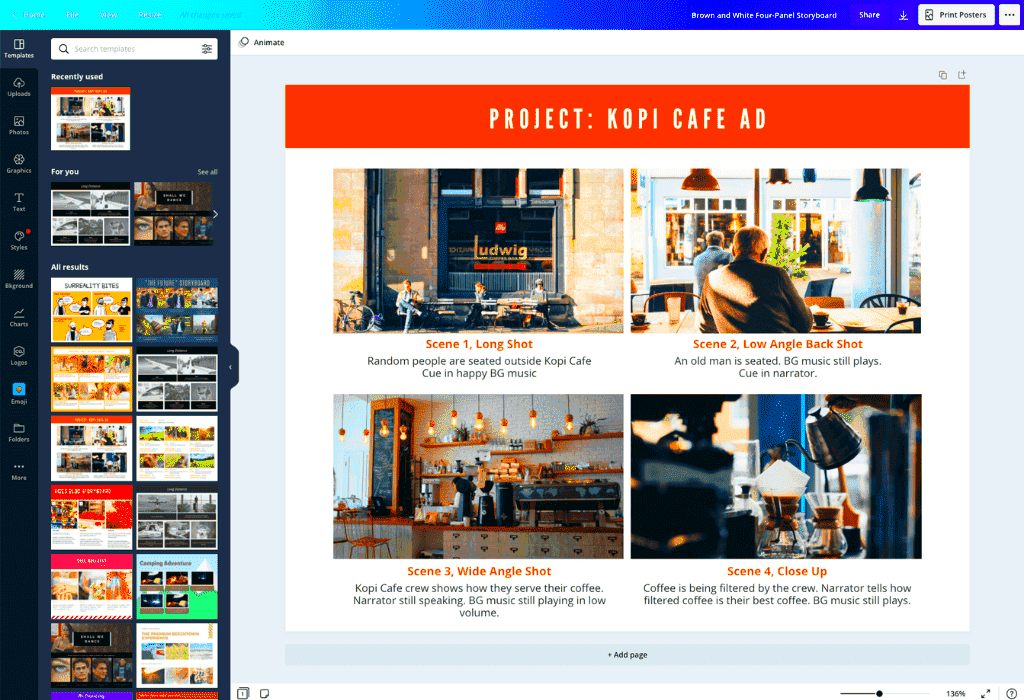Storyboarding goes beyond merely drawing out a series of events; it's akin to crafting an intricate fabric of concepts that infuse vitality into your vision. During my initial days as a creator I tended to overlook this process thinking I could improvise. However I soon realized that a carefully planned storyboard serves as a guide steering you through the creative process. It aids in envisioning the progression pinpointing potential challenges and igniting innovation. When you take the time to storyboard you create an opportunity to experiment with ideas, like a child stacking blocks and explore how they seamlessly come together.
How Canva Streamlines the Storyboarding Process
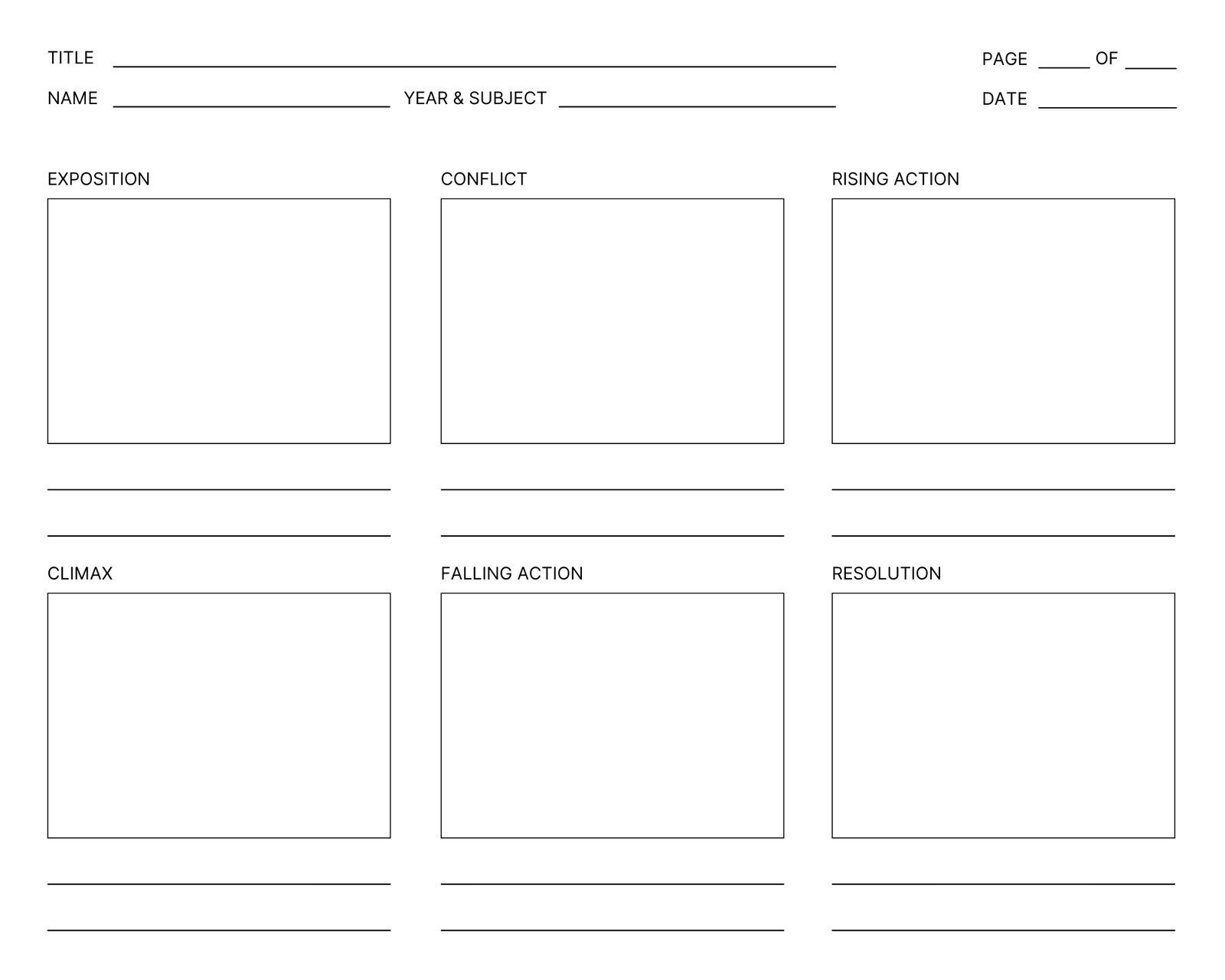
Canva is that dependable buddy who is always there for you. Its user friendly design makes it easy for anyone to get into storyboarding regardless of their skill level. The drag and drop feature lets you effortlessly reposition elements allowing you to tweak your storyboard as your concepts develop. I recall a time when I needed to present a video campaign. With Canva I could swiftly shuffle scenes to find the sequence that would resonate best with my audience. Additionally the cloud functionality enables me to access my projects from anywhere making those last minute adjustments a breeze!
Also Read This: How to Sell Images on iStock as a Beginner Contributor
Exploring Canva's Storyboard Templates
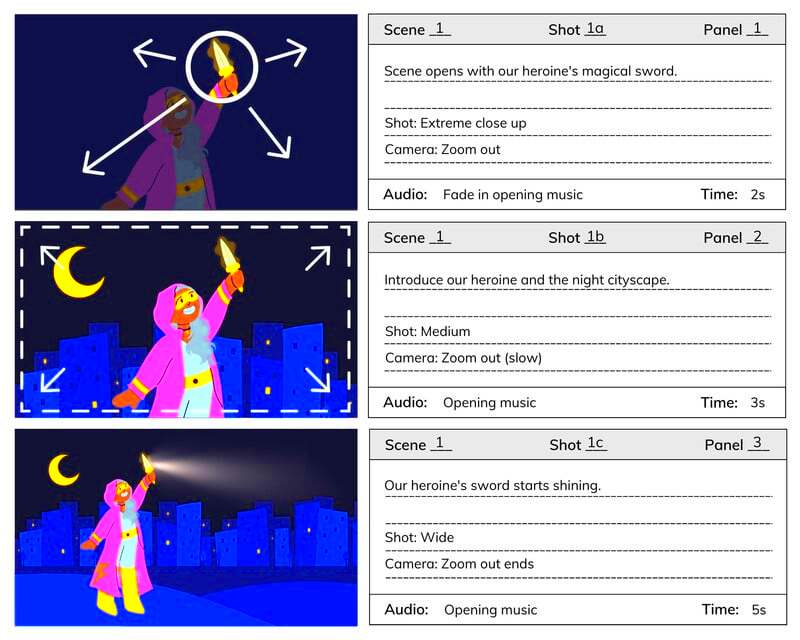
Canva provides a wide range of storyboard templates to meet different requirements. Here’s a brief overview of what you can find.
- Marketing Campaign Storyboards: Perfect for laying out the flow of your advertisements.
- Film and Animation Storyboards: Great for filmmakers, providing a structured way to visualize scenes.
- Educational Storyboards: Ideal for teachers planning lessons, helping to outline objectives and activities.
These templates are a way to kickstart your ideas and boost your efficiency. I frequently peruse them to spark my creativity and it resembles perusing an exhibition. Whether you're looking for a design or a comprehensive roadmap Canva offers options that cater to your preferences.
Also Read This: Earnings from Shutterstock Editorial Use
Steps to Create Your Storyboard Using Canva
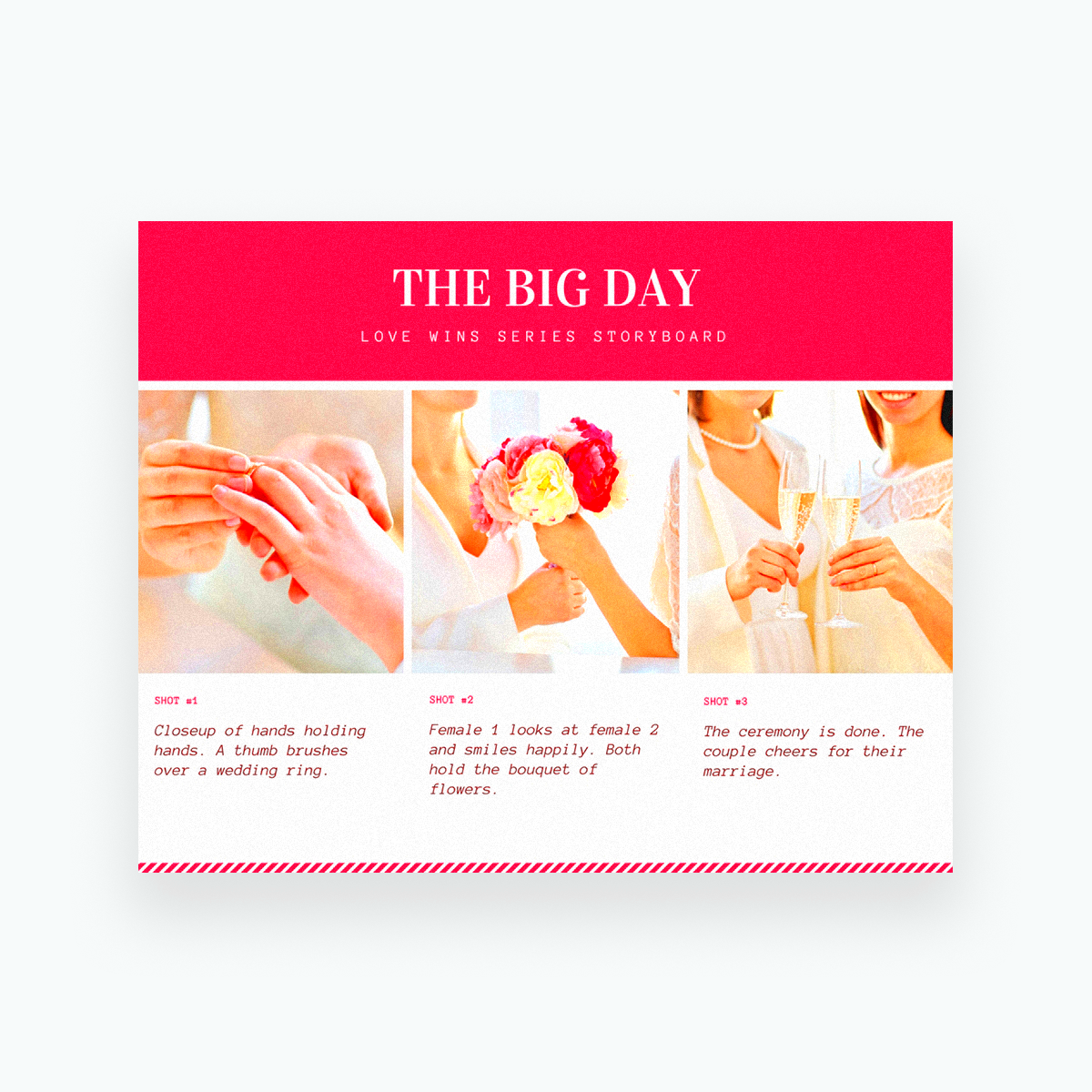
Making a storyboard using Canva is similar to getting ready your dish; once you grasp the process it turns into an enjoyable journey. Here’s my approach to it.
- Sign Up or Log In: First things first, if you’re not already on Canva, create an account. If you are, just log in. It’s free and super easy!
- Select a Template: Head to the search bar and type “storyboard.” You’ll find a plethora of templates. Choose one that resonates with your project.
- Outline Your Scenes: Start filling in the scenes. Write brief descriptions, add visuals, and organize them in the order that makes sense for your story.
- Incorporate Visual Elements: Use Canva’s extensive library to drag and drop images, icons, or even shapes. I love adding personal images to make it more relatable.
- Review and Adjust: Once you have the basics down, take a step back. Does it flow well? Are there any gaps? This is the perfect time to make adjustments.
- Share Your Storyboard: You can easily share your storyboard with team members or collaborators directly through Canva.
Through these steps I’ve created a number of effective storyboards that have not only assisted with the planning phase but also proven to be a valuable resource during implementation.
Also Read This: How to Perform Magic Tricks with Your Hands
Customizing Your Storyboard for Unique Projects
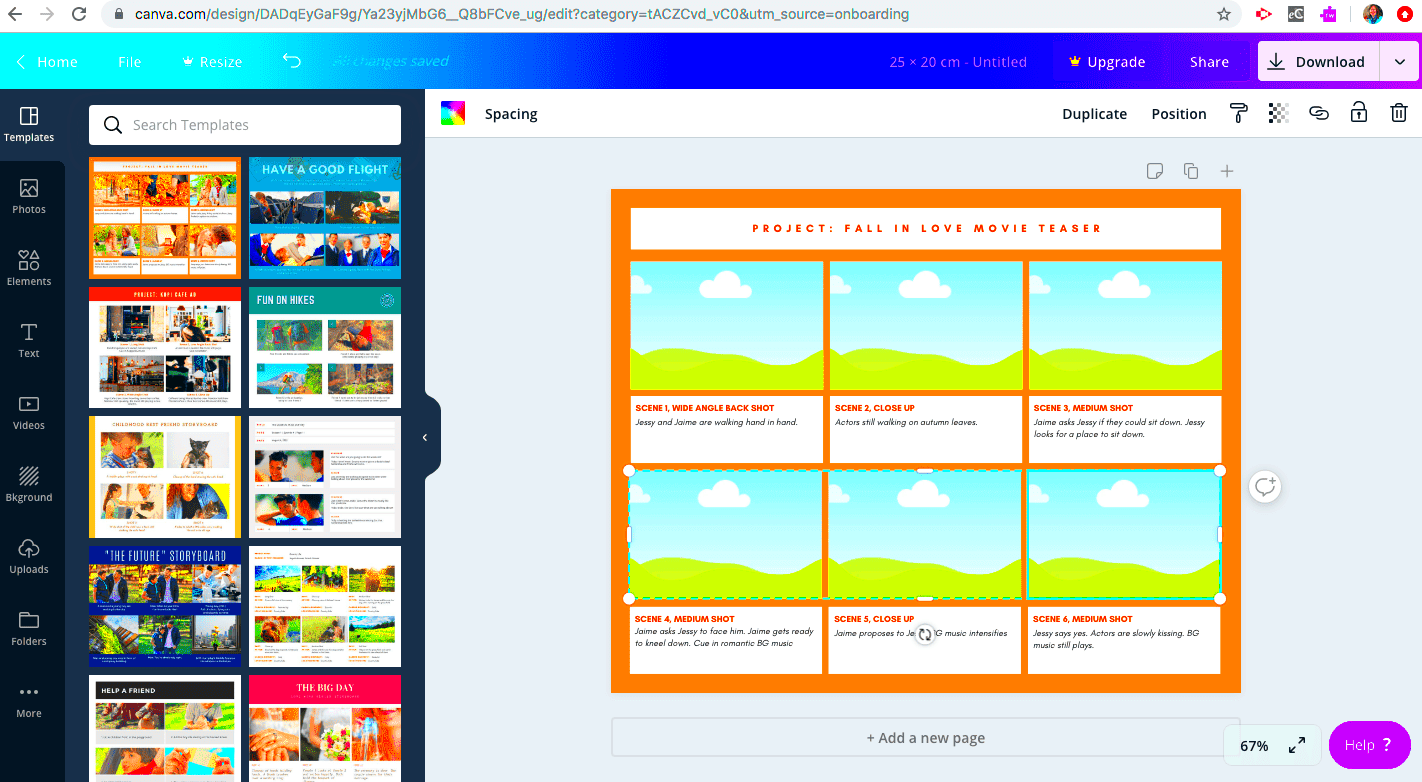
The real enchantment lies in tailoring things to suit your vision. Each endeavor carries a unique touch and it's crucial to capture that in your visual narrative. For instance when I contributed to a blog I aimed to evoke a sense of wanderlust. To achieve this I incorporated hues, travel inspired symbols and even sprinkled in snapshots from my own journeys.
Here are a few suggestions to make your storyboard more unique and tailored to your style.
- Use Your Brand Colors: If you have a brand palette, incorporate those colors. It creates consistency and recognition.
- Add Personal Touches: Include images, quotes, or even sketches that relate to your project. It makes the storyboard uniquely yours.
- Modify Layouts: Don’t hesitate to adjust the layout. Move elements around until it feels right. Canva allows you to resize and reshape boxes easily.
- Include Annotations: Add notes or comments to remind yourself of key points or ideas you might want to explore later.
Adding touches to your storyboard not only enhances its visual appeal but also establishes a deeper emotional bond with the project.
Also Read This: How to Delete YouTube Notifications
Collaborating with Your Team on Canva
Working together on projects is super easy with Canva and I can't stress enough how important it is for creativity. During a project I found myself in different places with my team but thanks to Canva it felt like we were all bouncing ideas off each other, in the same space.
Here’s a guide on how to work together seamlessly with Canva.
- Invite Team Members: Use the “Share” feature to invite your teammates. You can give them view or edit access based on what you prefer.
- Leave Comments: The commenting feature allows team members to give feedback without altering the original content. This is especially useful for brainstorming.
- Version Control: Canva keeps track of changes, so you can revert to earlier versions if needed. This feature has saved my sanity on more than one occasion!
- Real-Time Collaboration: Work on the storyboard together in real-time. It’s exciting to see ideas come to life simultaneously.
Working together in Canva not only improves your projects quality but also boosts team cohesion. I really value the time spent brainstorming with my team and Canva facilitates those moments.
Also Read This: Seamlessly Stream NBA League Pass on YouTube TV
Tips for Effective Storyboarding
Creating storyboards is a skill that can take your projects to the level. Throughout my journey I’ve gathered some insights that have changed my perspective on this crucial process. It’s not solely about putting your thoughts down on paper; it’s about weaving a story that strikes a chord. Here are a few pointers to remember.
- Start with a Strong Concept: Before diving into visuals, define the core message you want to convey. This clarity will guide your entire storyboard.
- Break It Down: Divide your storyboard into manageable sections. Think of it like slicing a cake; each piece should be delicious on its own but also part of a greater whole.
- Utilize Visual Hierarchy: Highlight the most important elements using size, color, or placement. This helps viewers focus on key points without feeling overwhelmed.
- Be Flexible: Allow for changes as your project evolves. I’ve learned to embrace spontaneity; some of my best ideas came from unexpected tweaks.
- Seek Feedback: Share your storyboard with others and be open to constructive criticism. I often send mine to friends or colleagues to gain fresh perspectives.
When you storyboard it should be an adventure where you can freely explore and share your thoughts. Don’t forget that making errors is perfectly fine as they often pave the way for the most creative breakthroughs!
Also Read This: Viewing liked works on Behance
Frequently Asked Questions
Throughout my journey in storyboarding, I’ve come across a set of recurring questions. Let me share with you some of the inquiries that tend to arise frequently along with my thoughts on them.
- What is the purpose of a storyboard? A storyboard helps visualize the flow of your project, making it easier to plan and execute. Think of it as a roadmap for your creative journey.
- Can I use Canva for different types of projects? Absolutely! Canva’s versatility means you can create storyboards for marketing campaigns, films, educational content, and more.
- How do I choose the right template? Look for a template that resonates with your project’s theme. Don’t be afraid to customize it further to suit your needs.
- Is it necessary to be an artist to create a storyboard? Not at all! While drawing skills can help, Canva provides ample resources to create visually appealing storyboards without needing to be an artist.
These queries tend to mirror the worries that people encounter and I aspire to offer some clarity through my responses. Keep in mind that each creators path is distinct and there isn't a universal method that suits everyone.
Wrapping Up Your Storyboarding Journey
As we conclude this deep dive into storyboarding let’s take a moment to ponder the path you’ve traveled. Each storyboard you craft serves as a building block in your artistic journey. I vividly remember my initial storyboard it was a bit messy adorned with sketches and scrawls yet it laid the groundwork for me. With every storyboard that followed I learned something valuable refining my techniques and shaping my perspective.
Take a breather to reflect on how far you've come and the wisdom gained throughout the journey. Here are some parting reflections to ponder over:
- Celebrate Small Wins: Every completed storyboard is an achievement. Treat yourself to something special after finishing a challenging project.
- Keep Practicing: The more you storyboard, the better you’ll become. Don’t shy away from trying new styles and techniques.
- Stay Inspired: Surround yourself with inspiration. Follow creators, watch videos, or read books that fuel your passion.
Storyboarding goes beyond being a simple job; it’s a chance to narrate your tale with a perfect blend of organization and artistry. So, gather your materials and unleash your creativity. Cheers to embarking on thrilling new ventures in the future!
